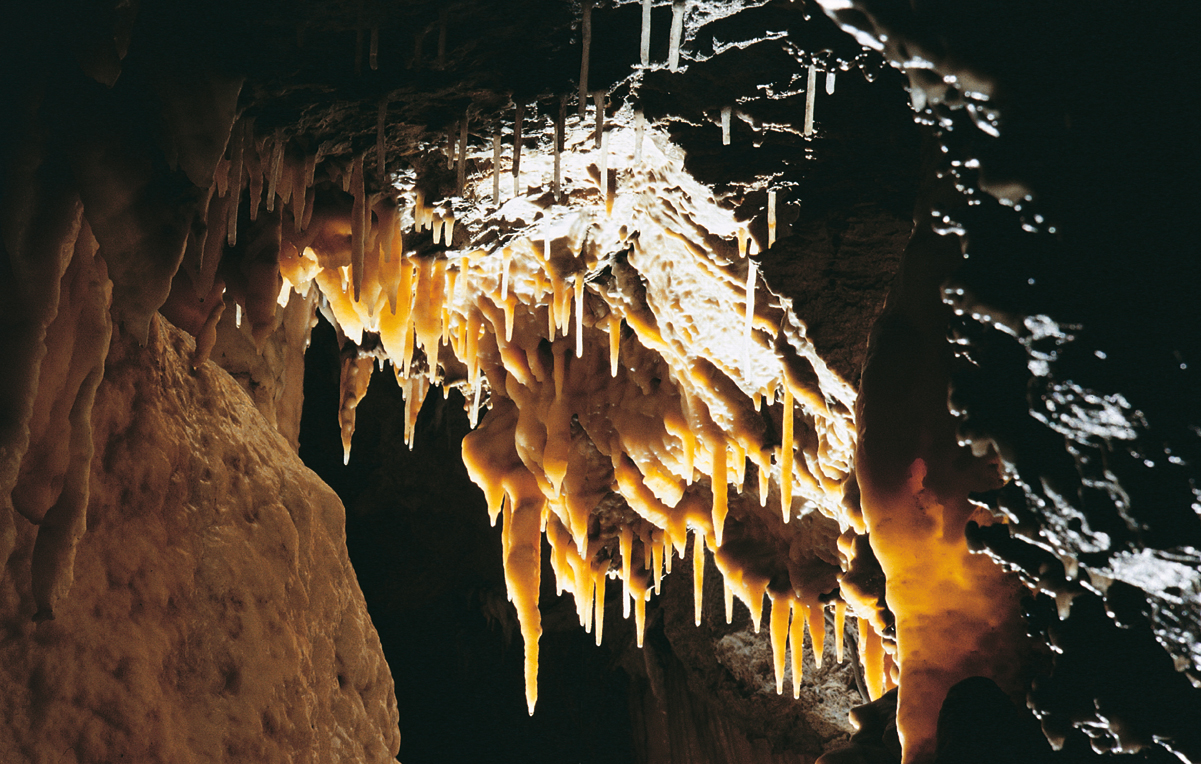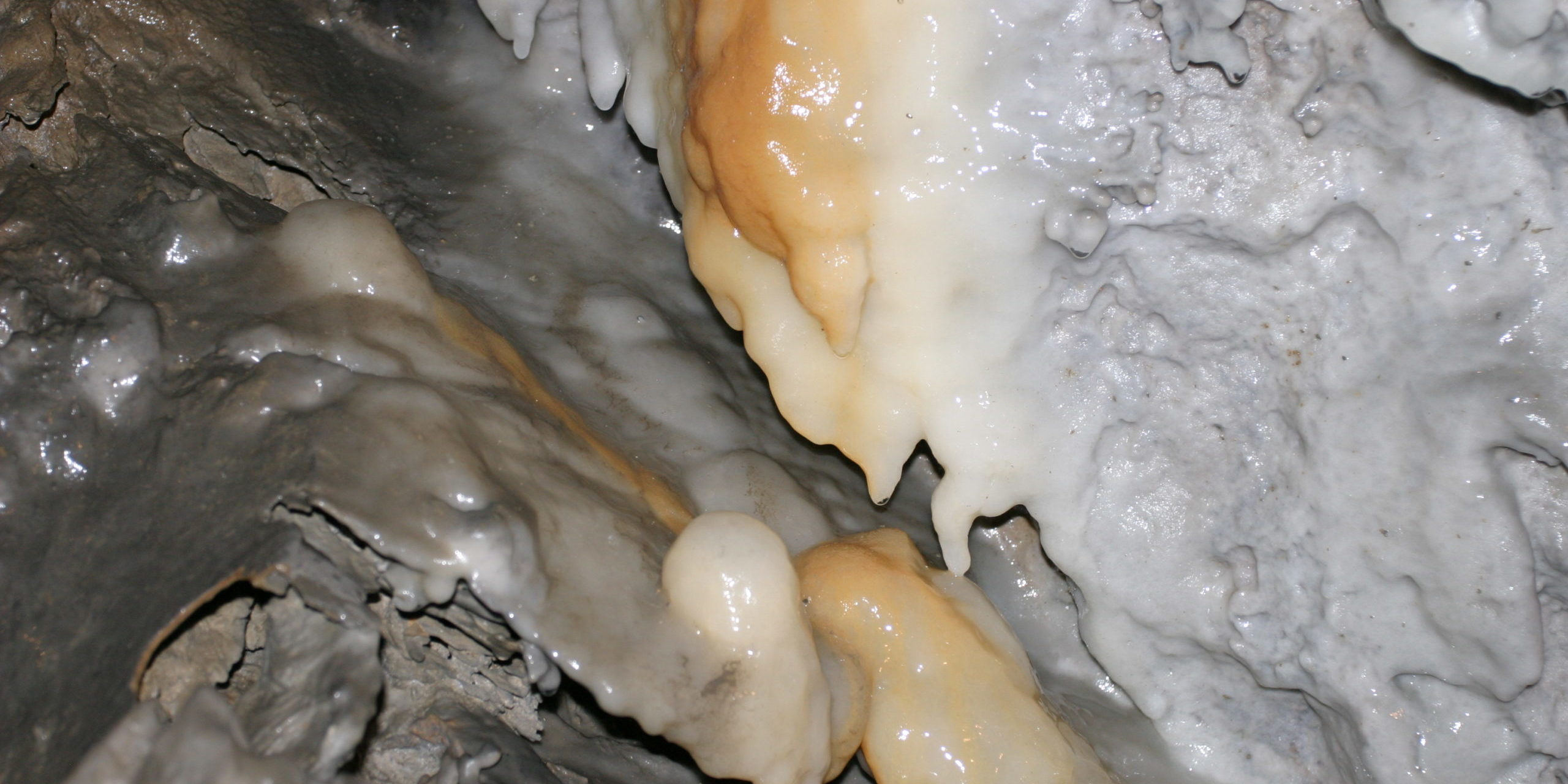
The bright colours of the formations in the Grotta del Vento.
One of the most frequent questions that visitors to the cave ask the guides is about the color of the formations. Up until a few years ago in practically all show caves the answer was always the same: “White indicates that the calcium carbonate is pure, whereas all the other colours which go from yellow to brown, the various intermediate tones, such as orange and reddish colours, were due to different concentrations of oxide (or hydroxide) of iron”. And often they added : “black, with all the shades of grey, is instead due to the presence of oxides (or dioxide) of manganese”. In one case the metallic grey (which obviously no-one saw) was due to the presence of pyrite. In a small cave which has been closed for visits for tens of years, the guide used to even say that the black colour of a stalagmite was due to the slow transformation of calcium carbonate into pure carbon (!).
Sometimes the colour does not depend so much on mineral substances, but more on the political views of the guide. About forty years ago, in a cave in eastern Europe confining with Italy, the guide would explain that the black colour of some flowstones were due to “the polluting fumes of your capitalistic society”.
The only exact thing of those mentioned in the list above is that if a formation is made of pure calcite its colour is white.

From recent studies it emerges that in almost the totality of cases the most frequent colours are due to various concentrations of organic acids produced by the vegetation that grows on the soil above caves. Amongst the most important are fulvic acid and humic acid. One of the greatest experts of limestone formations at world level, Prof. Paolo Forti, from the University of Bologna, has been stating this for years, on the occasion of the courses held all over Italy for cave guides organized by A.G.T.I. (Italian Show Caves Association) in collaboration with S.S.I. (Italian Speleological Society).
But old habits die hard and it still happens to hear being said (also during some courses of speleology) that the colours of the formations depend on mineral substances dissolved in water.



The bright colours of the formations in the Grotta del Vento








